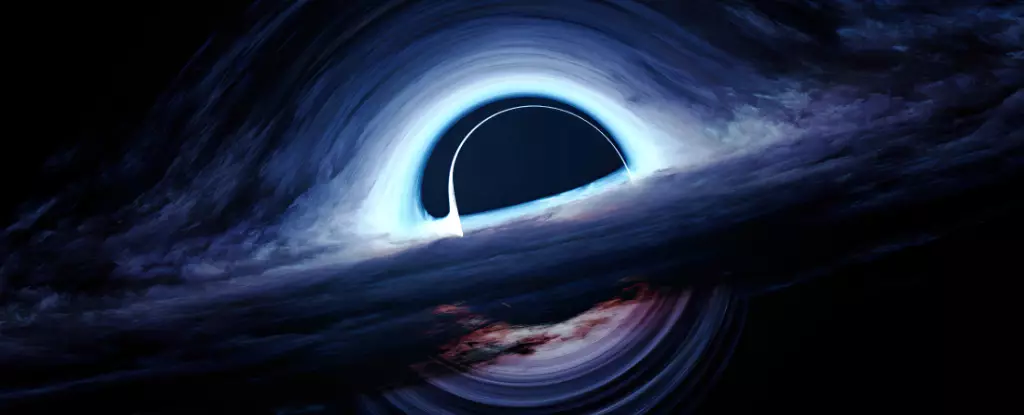Supermassive black holes (SMBHs) are enigmatic entities situated at the centers of galaxies, displaying an extraordinary mass typically around one billion times that of the Sun. Their nature evokes both awe and trepidation, presenting significant puzzles for astronomers. These massive structures have been identified in galaxies that existed when the universe was less than one billion years old, often manifesting as luminous quasars. These quasars are essential for our understanding of black hole formation, indicating not only the presence of black holes but also providing innermost insights into their rapid growth and early existence in cosmic history.
The growth process of black holes occurs through accretion, which involves engulfing surrounding matter. This mechanism generates vast amounts of radiation, limiting how fast these entities can increase in mass. Consequently, scientists grapple with formulating a coherent narrative about how these black holes achieved such tremendous sizes in relatively short cosmic timeframes.
The origins of supermassive black holes remain an area of active research and debate. One proposed method of formation involves primordial black holes, which may have emerged shortly after the Big Bang. While this theory could explain the existence of low-mass black holes, it fails to account for the significant numbers of massive black holes that we observe today.
An alternative model suggests that black holes form during the terminal phases of massive stars. This route leads to the creation of stellar-mass black holes. If these black holes originate in high-density star clusters, mergers could facilitate their rapid growth into supermassive black holes. Here, the concept of “stellar mass seeds” comes into play, indicating the potential for these smaller black holes to grow at astonishing rates.
Another striking proposition is the formation of black holes from “heavy seeds,” which are thousands of times more massive than currently known stellar entities. One hypothesis involves a “direct collapse” scenario, wherein clusters of dark matter gas clouds gravitationally collapse under their own weight due to the absence of significant background radiation, which inhibits star formation. However, this idea is limited by the necessity for dark matter halos to reach sufficient sizes—an occurrence that, according to the prevailing cosmological theories, is relatively rare.
For years, astronomers believed they had a comprehensive understanding of the number of galaxies in the early universe. Detecting supermassive black holes in these distant environments, however, presented considerable challenges, as only the brightest quasars could be identified. These quasars are not eternally consistent in luminosity; their brightness fluctuates due to the intermittent nature of their feeding processes.
Historically, astronomers have monitored the brightness of early galaxies over extended periods. Recent analyses—spanning over 15 years—have significantly increased our estimated census of black holes, revealing that the actual population is many times higher than previously thought. Unsurprisingly, the findings align with groundbreaking research conducted using the James Webb Space Telescope (JWST), which has corroborated the presence of numerous black holes in primordial galaxies.
Interestingly, our understanding of black hole formation might also encompass more unconventional mechanisms. Theoretical models suggest that stars could absorb dark matter particles during their formation, profoundly affecting their internal structure and stifling nuclear ignition. This could allow them to persist far beyond their expected lifespans, becoming much larger and ultimately collapsing into supermassive black holes.
The field of black hole formation research is still in its infancy, despite recent advancements. Upcoming projects—such as the Euclid mission and the Nancy Grace Roman Space Telescope—will enhance our abilities to unravel this cosmic mystery by mapping fainter quasars in the early universe. Meanwhile, the NewAthena mission and the Square Kilometer Array (SKA) are set to explore the intricate processes surrounding black holes during this formative period.
Yet, all eyes are currently focused on the JWST, which is pioneering in both imaging and spectroscopic capabilities. With its aid, astronomers anticipate a more accurate tally of black hole numbers and may even catch the moments of formation events linked to the earliest stars. Such discoveries would not only fill significant gaps in our understanding but also enrich our knowledge of the evolution of galaxies.
The pursuit of knowledge regarding supermassive black holes exemplifies the combination of curiosity and technological advancement in contemporary astrophysics. With coordinated, committed efforts by the global astronomical community, the next decade promises to yield transformative insights into the enigmatic lives of these stellar giants and the very fabric of our universe.


Leave a Reply